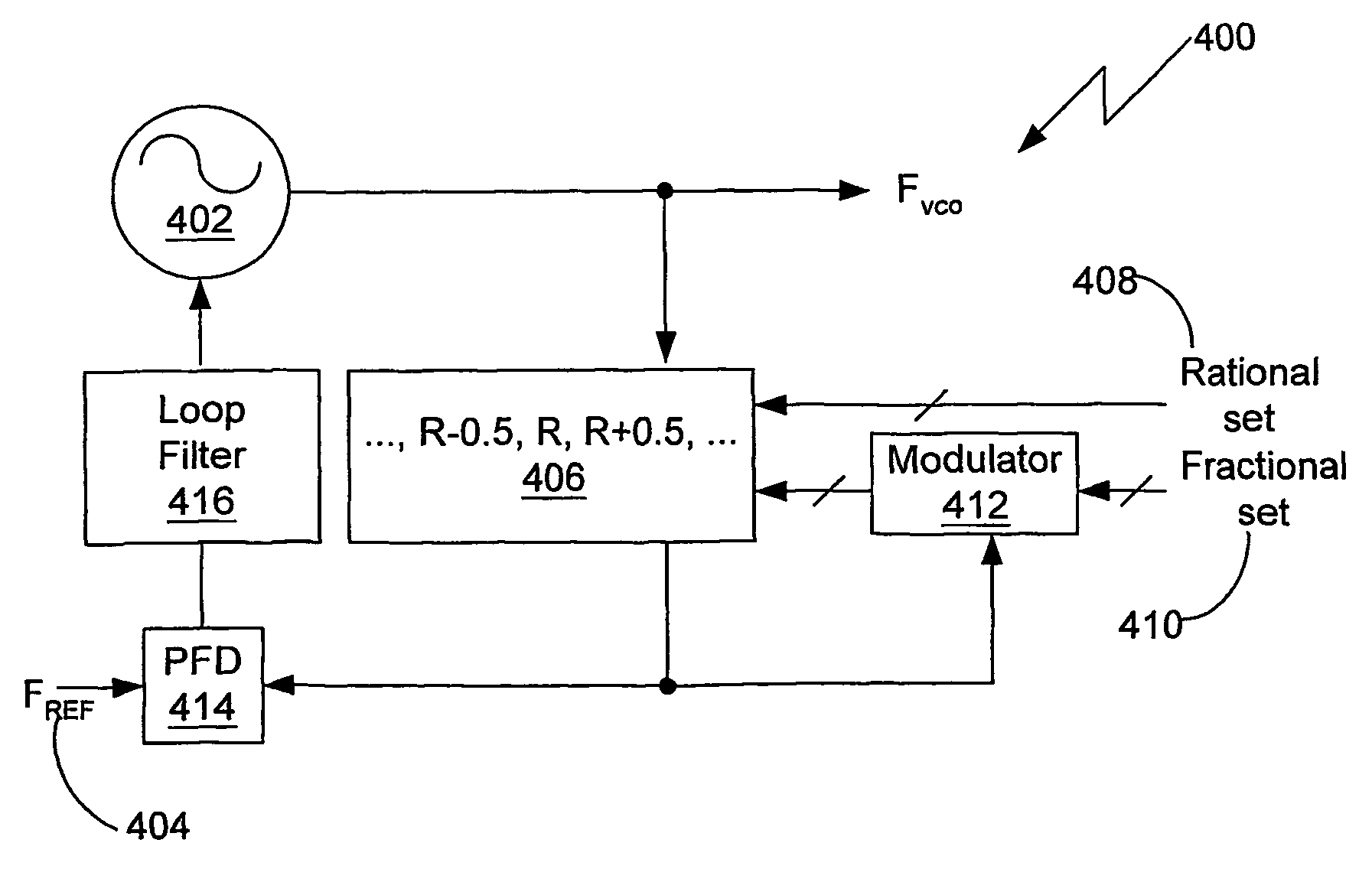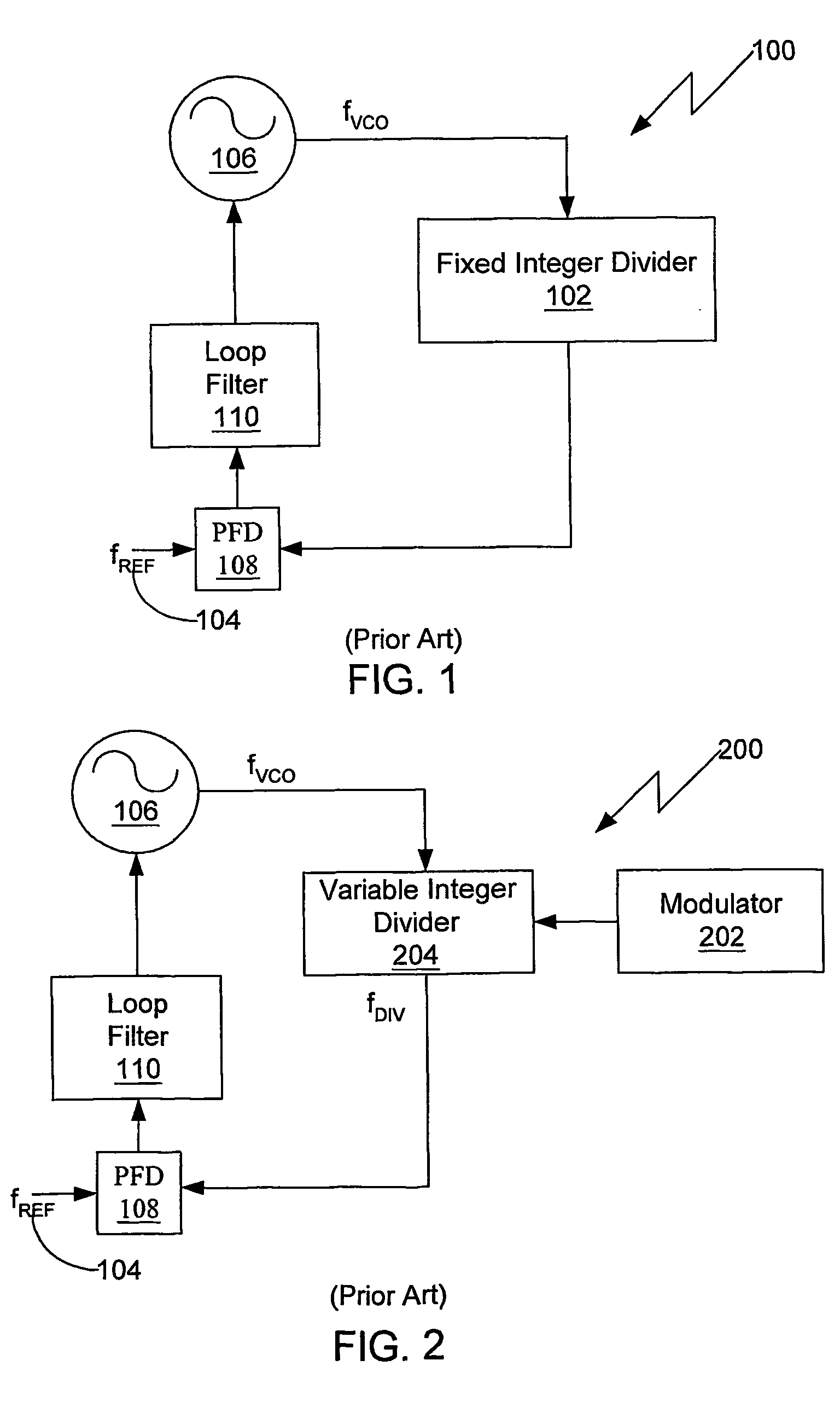Fractional-R frequency synthesizer
a frequency synthesizer and fractional frequency technology, applied in the field of frequency synthesizers, can solve the problems of affecting the performance of the synthesizer, so as to reduce the phase noise of the synthesizer and less perturbation of the pll synthesizer
- Summary
- Abstract
- Description
- Claims
- Application Information
AI Technical Summary
Benefits of technology
Problems solved by technology
Method used
Image
Examples
Embodiment Construction
[0026]Two preferred embodiments of the fractional-R synthesizer are described. They differ in the implementation of the VCO and the rational divider. We note that a rational divider must have timing information within a fraction of a VCO cycle. If the duty cycle of the VCO Is very close to 50%, then we have timing information available every half VCO cycle. This information can be used to implement a multi-modulus divider with minimum rational steps of r=0.5. A 0.5 minimum step rational divider is described in detail in reference: M. H. Perrott, “Techniques for high data rate modulation and low power operation of fractional-N frequency synthesizers,” Ph.D. dissertation, MIT, 1997, and will be summarized in the description of FIG. 5.
[0027]To implement a divider with r<0.5 we must have access to multiple phases of the VCO, to break the VCO cycle into smaller fractions. This is possible in a ring oscillator VCO. A ring oscillator consists of a number of digital buffers connected in ser...
PUM
 Login to View More
Login to View More Abstract
Description
Claims
Application Information
 Login to View More
Login to View More - R&D
- Intellectual Property
- Life Sciences
- Materials
- Tech Scout
- Unparalleled Data Quality
- Higher Quality Content
- 60% Fewer Hallucinations
Browse by: Latest US Patents, China's latest patents, Technical Efficacy Thesaurus, Application Domain, Technology Topic, Popular Technical Reports.
© 2025 PatSnap. All rights reserved.Legal|Privacy policy|Modern Slavery Act Transparency Statement|Sitemap|About US| Contact US: help@patsnap.com



